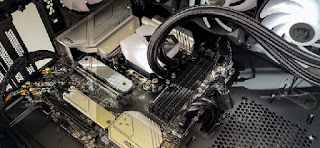Ray tracing is a rendering technique that has become increasingly popular in recent years. It simulates the behavior of light in a virtual 3D environment, allowing for photorealistic images and animations. The technique has been used in everything from movies and video games to architectural visualization and product design. In this article, we will explore what ray tracing is, how it works, and why it has become such an important tool for visual artists.
What is Ray Tracing?
Ray tracing is a rendering technique that simulates the path of light as it interacts with objects in a virtual environment. The technique involves tracing the path of a ray of light from the camera's viewpoint and calculating how it bounces off objects in the scene until it reaches the light source. This process is repeated for each pixel in the image to generate a photorealistic representation of the scene.
Ray tracing has been around for decades, but it was too computationally expensive for most applications until recently. With the advent of faster processors and graphics cards, however, it has become much more accessible to a wider range of artists and designers.
How Does Ray Tracing Work?
Ray tracing works by simulating the behavior of light in a virtual environment. The process begins with a camera that is positioned at a specific location and orientation within the scene. The camera then shoots out rays of light in a straight line in every direction, forming a cone of light that extends out from the camera.
Each ray of light that is shot out from the camera is traced as it interacts with objects in the scene. The ray first hits the closest object in its path, and the direction of the ray is then changed based on the physical properties of the object it hit. For example, if the ray hits a mirror, it will reflect off the surface at the same angle as it hit the mirror. If it hits a transparent object like a glass window, it will refract, or bend, as it passes through the material.
Once the ray has been reflected or refracted, it continues on its path until it either hits a light source or reaches the maximum number of bounces allowed by the software. Each time the ray bounces off an object, it loses some of its energy, so after a certain number of bounces, the ray becomes too weak to continue and is terminated.
Why is Ray Tracing Important?
Ray tracing is important because it allows for the creation of photorealistic images and animations. Traditional rendering techniques like rasterization can produce high-quality images, but they often lack the subtle nuances of light and shadow that make an image look real. Ray tracing, on the other hand, is able to simulate the complex behavior of light in a way that produces highly realistic images.
Another benefit of ray tracing is that it allows for more realistic reflections and refractions. In traditional rendering techniques, reflections and refractions are often faked by using texture maps or other tricks. With ray tracing, however, these effects are produced naturally, resulting in a more accurate and convincing image.
Ray tracing also allows for the creation of more complex lighting scenarios. With traditional rendering techniques, it can be difficult to simulate the interaction of multiple light sources in a scene. Ray tracing, however, is able to handle these scenarios with ease, resulting in more dynamic and visually interesting images.
Conclusion
Ray tracing is a powerful rendering technique that has become increasingly popular in recent years. It allows for the creation of highly realistic images and animations by simulating the complex behavior of light in a virtual environment. With the continued advancement of hardware and software, ray tracing is likely to become even more accessible and widely used in the coming years. If you are a visual artist or designer, it is definitely a technique worth exploring.



